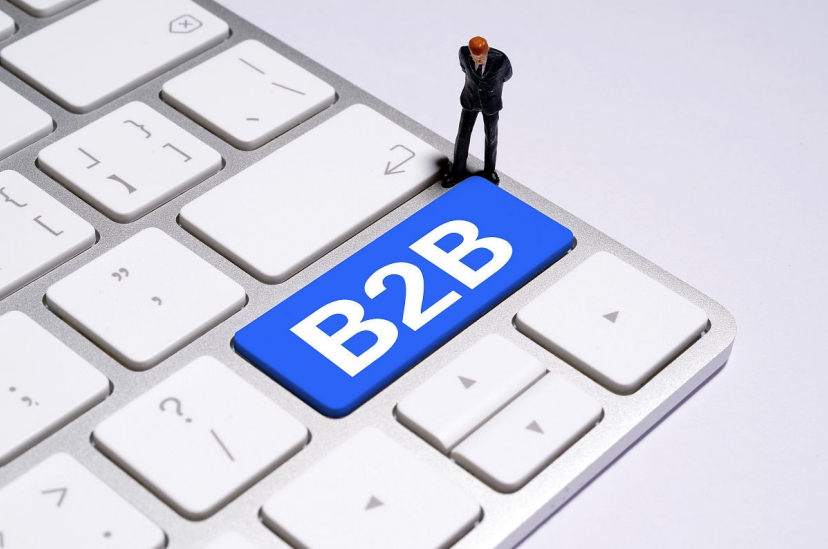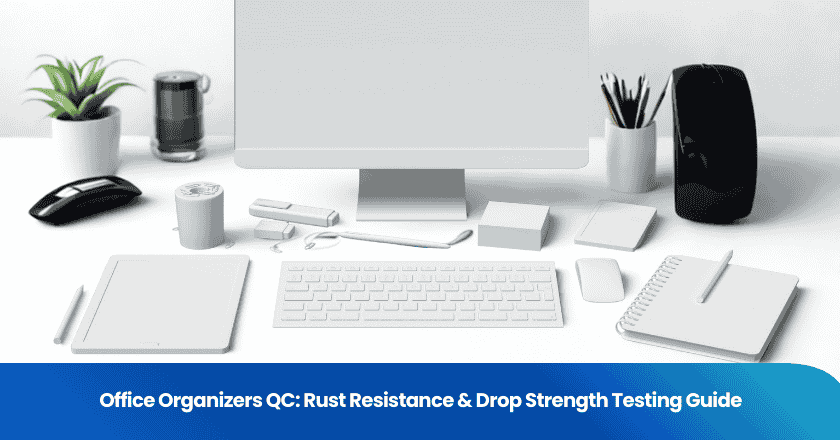
Since 2024, with the changes in the global economic environment and the rapid development of technology, the B2B (Business-to-Business) sourcing field has also been filled with new challenges and opportunities. Transactions between enterprises are becoming increasingly complex, and the requirements for efficiency, transparency, and cost control have reached new heights.
Currently, the common challenges in B2B sourcing include unstable supply chains, rising costs, and the inefficiency of traditional procurement processes. To overcome these challenges and achieve business growth and sustainable development, adopting best procurement practices becomes particularly important.
In this article, we will discuss the core elements of B2B sourcing, current trends, existing inefficiencies, and provide strategic recommendations for the future, helping everyone optimize the procurement process and enhance corporate competitiveness.
Understand B2B sourcing
Definition
B2B sourcing, which stands for Business-to-Business procurement, refers to the exchange of goods or services between enterprises for the purpose of production, operation, or resale. This process encompasses various aspects such as demand analysis, supplier selection, contract management, order processing, logistics and distribution, and after-sales support, and is an indispensable part of enterprise supply chain management.
B2B sourcing covers a wide range of procurement activities, involving various types of procurement such as raw materials, production equipment, office supplies, and services. It is a key means for enterprises to acquire resources, reduce costs, and enhance competitiveness.
The key components of B2B sourcing
1. Requirement analysis: Clarify the procurement needs of the enterprise, including the specifications, quantity, quality requirements, etc. of the required goods or services, to provide a foundation for subsequent procurement activities.
2. Supplier selection: Select suitable suppliers through market research, inquiry, price comparison, etc., to ensure that the purchased goods or services meet the needs of the enterprise and the cost is controllable.
3. Contract management: Sign a B2B sourcing contract with suppliers, clarify the rights and obligations of both parties, and ensure the smooth progress of procurement activities.
4. Order processing: According to the B2B sourcing plan, place orders with suppliers and track the execution of the orders to ensure timely delivery of goods or services.
5. Logistics and distribution: Organize the transportation and distribution of goods to ensure that they are safely and timely delivered to the designated location of the enterprise.
6. After-sales support: Provide necessary after-sales services for the purchased goods or services, and solve any problems that may arise during use.
The difference between B2B sourcing and B2C purchasing
Compared to B2C (Business-to-Consumer) sourcing, B2B sourcing places more emphasis on long-term cooperation, bulk transactions, and customized solutions. It has lower sensitivity to price but higher requirements for quality and service.
Current trends in B2B sourcing
Digital transformation
With the rapid development of information technology, digital transformation has become an inevitable trend for B2B sourcing.
Enterprises achieve automation, intelligence, and transparency in the procurement process by establishing electronic procurement platforms and utilizing advanced technologies such as cloud computing and big data. Digital transformation has improved procurement efficiency, reduced costs, enhanced the flexibility and response speed of the supply chain, and brought economic benefits to enterprises.
Sustainability and ethical B2B sourcing
In today's era of increasing environmental awareness and social responsibility, sustainability and ethical sourcing have become new trends in the B2B sourcing field.
In the procurement process, enterprises pay attention to the price and quality of goods or services, and increasingly focus on the environmental performance, labor rights, and social responsibility of suppliers. By implementing sustainable procurement strategies, enterprises can reduce their negative impact on the environment, fulfill their social responsibilities, and enhance their brand image and market competitiveness.
Establishing long-term partnerships with ethical suppliers helps ensure the stability and reliability of the supply chain.
Inefficiency in B2B sourcing
In the field of B2B sourcing, inefficiencies often lurk within complex supply chains and cumbersome management processes, affecting the overall operational efficiency of enterprises. The following will explore the inefficiencies in B2B sourcing and their management strategies from the perspectives of long-tail consumption and supplier relationship management.
Long Tail Consumption
Definition and Challenges
Long-tail consumption, in the field of B2B sourcing, usually refers to the procurement projects of a large number of small, non-recurring or low-value consumables in enterprises. Although the single procurement amount of these projects is not high, due to the wide variety and high procurement frequency, the overall expenditure is often considerable.
The management of long-tail consumption faces many challenges, such as:
1. High management costs: Due to numerous projects, each requiring individual handling, the management costs have significantly increased.
2. Low procurement efficiency: Decentralized procurement demands make it difficult to achieve economies of scale, extending the procurement cycle and affecting business progress.
3. Low transparency: The lack of effective monitoring and auditing mechanisms can easily lead to information asymmetry and corruption issues.
Strategies for managing long-tail expenditures
To effectively manage long-tail expenditures, enterprises can adopt the following strategies:
- Centralized procurement platform: Establish a unified B2B sourcing platform to centralize scattered procurement needs, create economies of scale, and reduce procurement costs. Through electronic procurement processes, improve procurement efficiency and shorten procurement cycles.
- Data analysis and optimization: Utilize big data analysis tools to conduct data analysis on long-tail consumer items, identify high-frequency, high-value procurement projects, and prioritize optimization management. By analyzing historical data, predict future demand and plan procurement plans in advance.
- Supplier integration: Establish long-term partnerships with a select number of high-quality suppliers, integrate supplier resources, reduce the number of suppliers, and increase procurement concentration. By centralizing and bulk purchasing, procurement costs are reduced.
- Standardization and modularization: Standardize and modularize long-tail consumer items, reduce product types and specifications, and lower management difficulty and procurement costs. Through modular design, enhance procurement flexibility and response speed.
Supplier relationship management
The importance of strong supplier relationships in B2B sourcing
Good supplier relationships help ensure supply stability, improve product quality and service levels, reduce procurement costs, and enhance the overall competitiveness of the supply chain.
Specifically:
- Supply stability: Establishing long-term partnerships with reliable suppliers to reduce the risk of supply chain disruptions and ensure the continuity and stability of enterprise production.
- Cost control: By engaging in long-term cooperation and bulk B2B sourcing, we can obtain more favorable pricing policies and service terms, thereby reducing procurement costs.
- Quality assurance: Suppliers are responsible for product quality, and enterprises do not need to invest excessive resources in quality monitoring and inspection, reducing quality management costs.
- Innovative cooperation: Collaborate with suppliers on product development and innovation to enhance the market competitiveness and added value of products.
Tools and techniques for effective B2B sourcing management
To effectively manage supplier relationships, enterprises can adopt the following tools and techniques:
Supplier Evaluation and Selection System: Establish a supplier evaluation system to comprehensively assess suppliers from multiple dimensions such as quality, price, delivery capability, and service level. Select the optimal supplier through price comparison, negotiation, and other means.
Supplier performance management: Regularly evaluate supplier performance, including product quality, delivery time, service level, and other aspects. Based on the evaluation results, formulate corresponding reward and punishment measures and improvement plans to promote continuous improvement of suppliers.
Information Sharing and Collaborative Operation Platform: Establish an information sharing and collaborative operation platform to achieve real-time information sharing and collaborative operations between enterprises and suppliers. Improve the response speed and accuracy of the supply chain through electronic order processing, inventory management, and other means.
Supplier relationship management software: Utilize professional B2B sourcing software to achieve centralized management and dynamic updates of supplier information. Monitor and analyze supplier performance in real-time through the analysis tools provided by the software, providing strong support for decision-making.
What are the characteristics of the B2B sourcing market?
Characteristics of modern B2B sourcing market
Technology integration
With the rapid development of Internet technology, modern B2B markets are highly dependent on digitalization and intelligent technology. By establishing B2B e-commerce platforms, enterprises achieve automation and intelligence in transaction processes, improving transaction efficiency. These platforms support online inquiry, quotation, order placement, payment, and other functions. Through big data analysis, artificial intelligence, and other technologies, they provide value-added services such as market demand forecasting, intelligent recommendation, inventory management, etc., helping enterprises optimize supply chain management, reduce costs, and enhance competitiveness.
Through the application of advanced technologies such as the Internet of Things (IoT) and blockchain, modern B2B markets achieve real-time collection and sharing of data across various links in the supply chain, making the supply chain more transparent and visible. Enterprises can track the production progress, inventory status, logistics location, and other information of products in real time, adjust production plans in a timely manner, optimize inventory allocation, and reduce resource waste and operating costs.
User experience and accessibility
Modern B2B markets focus on optimizing and enhancing user experience. By introducing artificial intelligence technology, B2B e-commerce platforms can provide personalized user interfaces, operational processes, and recommendation services based on users' preferences and behavioral habits. For example, recommending related products based on users' search history; providing convenient payment and logistics methods based on users' transaction habits, etc. This personalized user experience approach not only enhances user satisfaction and loyalty, but also strengthens the platform's competitiveness and market position.
With the popularization of the Internet plus, modern B2B markets provide multiple access channels. Enterprises can not only access B2B platforms through traditional PC terminals, but also conduct transactions and communication through various channels such as mobile clients, social media, and instant messaging tools. This multi-channel access method enhances market accessibility, making transactions more convenient and efficient.
The benefits of using B2B sourcing market
Cost-effectiveness
Reduce transaction costs: Through B2B e-commerce platforms, enterprises can achieve full-process electronic operations such as online inquiry, quotation, order placement, and payment, greatly reducing the labor, material, and time costs in traditional transactions. At the same time, the platform achieves economies of scale by aggregating a large number of suppliers and demanders, further reducing transaction costs.
Optimizing inventory costs: With the help of technologies such as big data analysis and artificial intelligence, enterprises can track market demand and inventory status in real-time, adjust production plans promptly, and optimize inventory allocation. This helps reduce inventory backlog and waste, and lower inventory costs.
Enhance B2B sourcing diversity
Expanding the range of options: The B2B market brings together suppliers from all over the world, offering a rich and diverse selection of products and services. Enterprises can flexibly choose the most suitable suppliers and partners based on their own needs and market conditions.
Promoting Competition and Cooperation: A diverse supplier group fosters market competition and drives continuous improvement in product and service quality. At the same time, suppliers can also collaborate and coordinate to jointly develop new products and technologies, enhancing the competitiveness of the entire supply chain.
Future considerations and strategic recommendations
Emerging technologies in B2B sourcing
Artificial intelligence and machine learning
The application of artificial intelligence (AI) and machine learning (ML) in B2B sourcing processes is becoming increasingly widespread, bringing higher efficiency and broader insights to enterprises.
The following are several key application areas:
Intelligent B2B sourcing decision-making: Utilizing AI and ML technology to analyze historical procurement data, market demand trends, and supplier performance, helping enterprises make more precise and faster procurement decisions. Through predictive analysis, enterprises can plan procurement plans in advance, optimize inventory structure, and reduce costs.
Supplier relationship management: Utilizing AI technology to automate the evaluation of supplier performance, including quality, price, delivery speed, and other aspects. Through continuous monitoring and data analysis, enterprises can identify and optimize relationships with key suppliers, ensuring the stability and reliability of the supply chain.
Automated B2B sourcing process: Utilizing AI and ML technology to automate multiple aspects of the B2B sourcing process, such as order processing and invoice review, reduces manual intervention and enhances processing speed and accuracy. This can lower the error rate and free up human resources for higher-value tasks.
Intelligent Recommendation System: Based on the user's B2B sourcing history and preferences, AI can recommend relevant products or services, helping enterprises discover potential sourcing opportunities and improve sourcing efficiency and quality.
Blockchain promotes transparency in B2B sourcing
The application of blockchain technology in B2B sourcing is also worthy of attention. Through its tamper-proof and distributed characteristics, blockchain can enhance the transparency of the supply chain:
Traceability: Blockchain can record the entire process information from raw material procurement to finished product delivery, ensuring traceability at every step. It helps prevent fraudulent behavior and can enhance consumer trust in products.
Enhancing Trust: By providing open and transparent transaction records, blockchain can reduce information asymmetry in the supply chain and enhance trust among suppliers, manufacturers, distributors, and retailers.
Smart contracts: Smart contracts on the blockchain can automatically execute the terms and conditions of the procurement agreement, reducing human intervention and disputes, and improving transaction efficiency.
Strategic Planning for 2024
Align procurement strategies with business objectives
When formulating the procurement strategy for 2024, enterprises should ensure that the procurement strategy is highly aligned with the overall business objectives.
Specific measures include:
Clarify business needs: Deeply understand the business needs and market changes of the enterprise, ensuring that the B2B sourcing strategy can meet the long-term development needs of the enterprise.
Optimize B2B sourcing process: By introducing new technologies such as AI and blockchain, optimize the B2B sourcing process, and improve sourcing efficiency and quality.
Establish a supplier evaluation system: Establish a scientific supplier evaluation system to ensure the establishment of long-term stable cooperative relationships with key suppliers.
Strengthen risk management: Enhance supply chain risk management to ensure the stability and reliability of the supply chain.
Prepare for market changes in B2B sourcing
Facing the rapidly changing market environment, enterprises should actively take measures to prepare for market changes:
Strengthen market research: Continuously pay attention to market dynamics and competitors' situations, and adjust procurement strategies in a timely manner to respond to market changes.
Flexible response to demand fluctuations: Utilize AI technology for demand forecasting and inventory optimization to ensure rapid response to market demand fluctuations.
Enhance digital capabilities: Strengthen the construction of digital capabilities for enterprises, including establishing a B2B sourcing platform, introducing advanced data analysis tools, etc., to enhance the overall competitiveness of the enterprise.
Cultivate compound talents: Strengthen employee training and development plans, cultivate compound talents who understand both procurement and technology, and lay a solid talent foundation for the future development of the enterprise.
END
Reviewing the entire text, we can understand the role of adopting best practices in B2B sourcing in enhancing enterprise operational efficiency, reducing costs, and strengthening competitiveness.
Facing the future, enterprises need to continuously adapt to technological innovations and market changes. Through strategic planning, they should actively transform and innovate their procurement models, continuously optimize procurement processes, strengthen cooperation with suppliers, and achieve sustainable development.
We strongly encourage enterprises to boldly explore in B2B sourcing practices, actively apply new technologies, and continuously enhance the level of intelligent procurement management, laying a solid foundation for the development of the enterprise.

Smart Sourcing Content Team
Article by Smart Sourcing Content Team
The Smart Sourcing Content Team is committed to delivering high-quality, easy-to-understand information that helps our audience navigate the complexities of global sourcing. Our team of writers has extensive experience in producing articles across various fields such as procurement, supply chain management, market trends, and industry best practices. We specialize in sectors like apparel, textiles, and consumer goods, providing targeted insights to help businesses in these industries optimize their sourcing strategies and stay competitive.
Grow your business with TradeAider Service
Click the button below to directly enter the TradeAider Service System. The simple steps from booking and payment to receiving reports are easy to operate.



